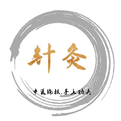Facial muscle spasms are involuntary, clonic contractions on one side of the face. Idiopathic cases are common, or they may be a temporary or permanent sequela of idiopathic facial nerve paralysis. The etiology of this condition is unclear, possibly due to ectopic excitation of the facial nerve or pseudo-synaptic conduction.
In the treatment of facial muscle spasms, medications, acupuncture, physical therapy, botulinum toxin type A injections, nerve block therapy, and surgical treatments are commonly used. The author employs acupuncture combined with local cupping therapy to treat facial muscle spasms, based on the principles of dispelling wind and regulating blood, promoting the harmonization of local Qi and blood, nourishing the meridians, thereby stopping the spasms.
Acupuncture Points: Yifeng (翳风), Tinghui (听会), Erheliao (耳禾髎), Qianliao (颧髎), Hegu (合谷), Zusanli (足三里), Shangjuxu (上巨虚), Xiajuxu (下巨虚).
Procedure: After disinfecting the skin at the acupuncture points, needle insertion is performed at Yifeng, Tinghui, Erheliao, and Qianliao using gentle techniques, with even tonification and reduction. For Hegu, Zusanli, Shangjuxu, and Xiajuxu, tonification techniques are applied, leaving the needles in for 30 minutes. After needle removal, rapid cupping is performed on the affected side of the face and forehead for about 2 minutes, until local skin congestion is achieved, once every other day, with a total of 10 sessions for one treatment course.
Facial muscle spasms are classified under the TCM category of wind syndrome. The Su Wen: Yin Yang Ying Xiang Da Lun states, “When wind prevails, movement occurs,” a concept supported by historical medical practitioners, with emphasis on Yin deficiency and blood deficiency. Wang Kentang in Zheng Zhi Zhun Sheng mentions: “The spleen wheel vibrates… the spleen does not await the opening and closing of people, but is pulled and vibrated, which is a disease of the Qi aspect, belonging to the liver and spleen meridians. Blood deficiency leads to Qi not flowing smoothly, which is not purely wind.” This indicates that facial muscle spasms are often caused by blood deficiency and internal wind disturbance. Therefore, the selection of acupuncture points focuses on the Yangming meridians, which are rich in Qi and blood, aiming to nourish and regulate blood, achieving the effect of extinguishing wind. The addition of cupping therapy locally can harmonize facial Qi and blood, promote blood circulation and metabolism in the face, and achieve the effect of relaxing the meridians and alleviating urgency.
Source: China Traditional Chinese Medicine News

